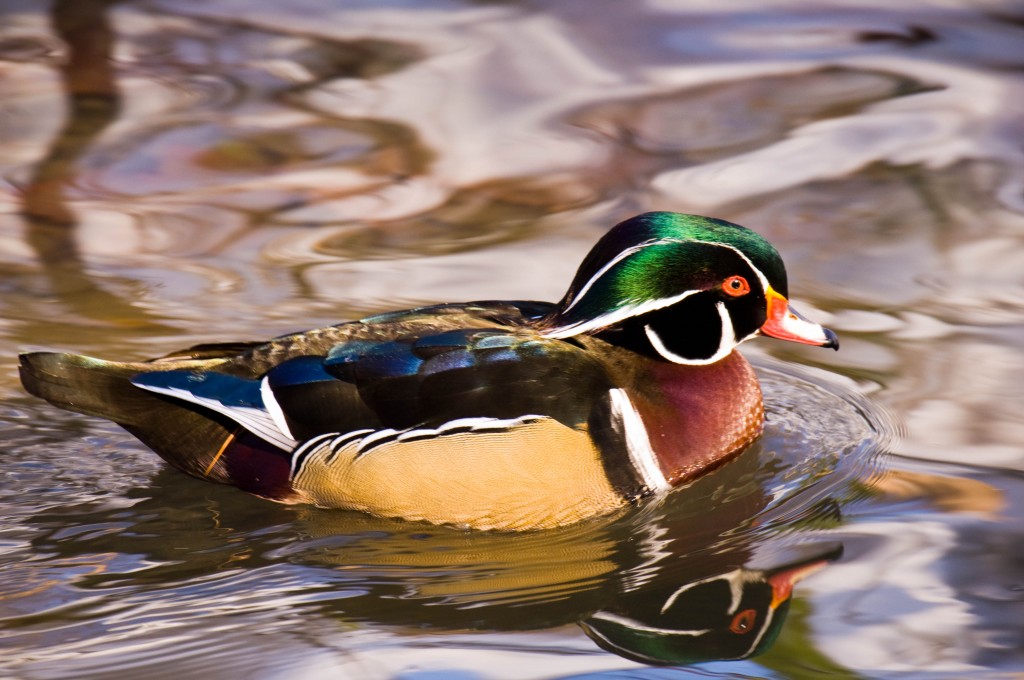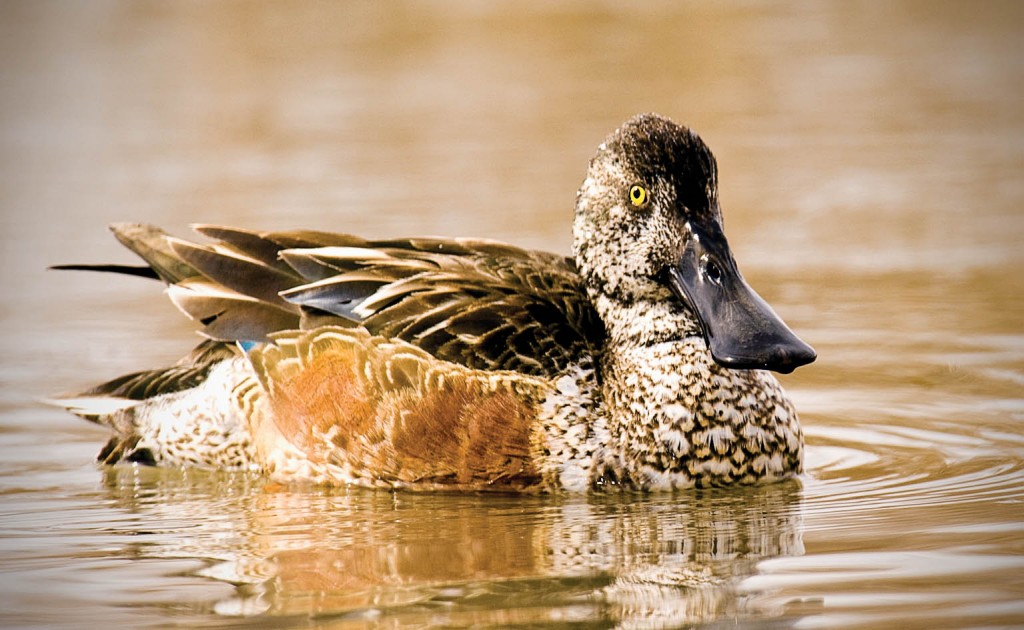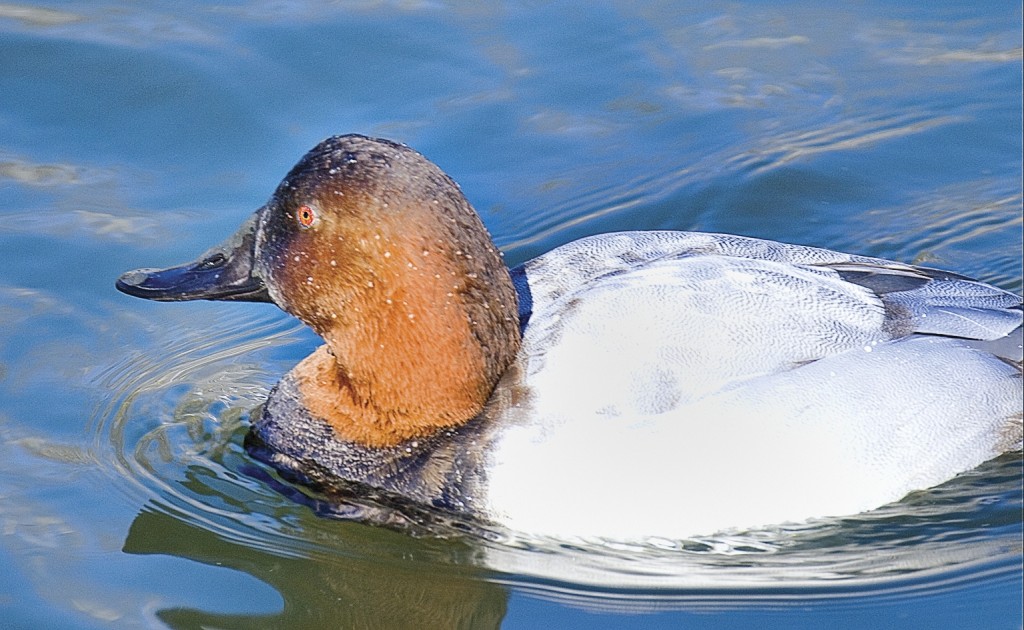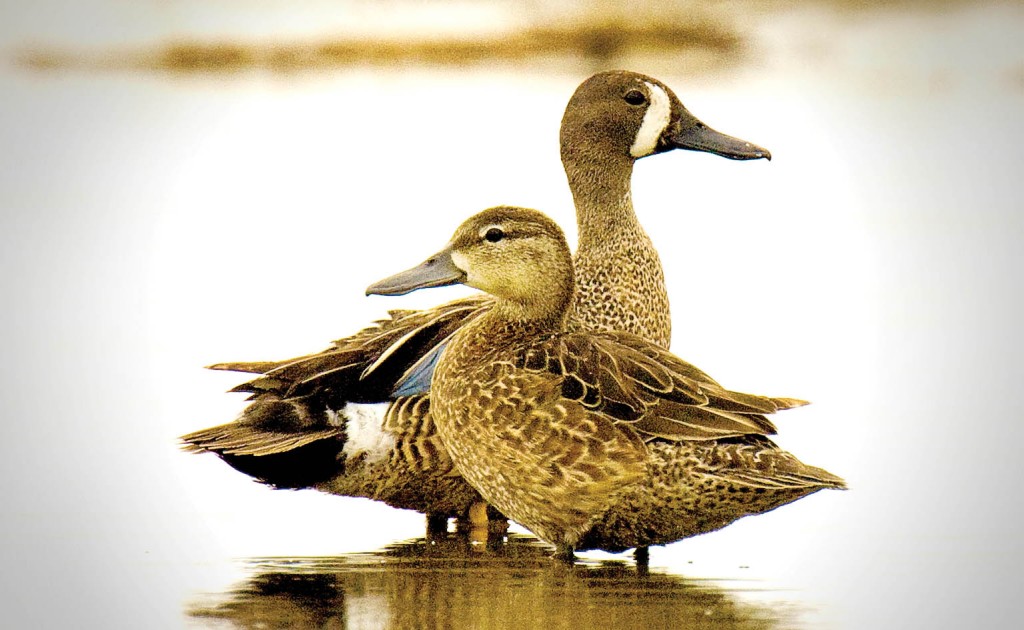Duck Diversity Needs Varieties of Healthy Habitats
As cooling summer breezes turn to crisp and even chill autumn winds, bird migration reaches full pulse as tens of thousands of individual birds from several hundred species pass down the Mississippi River flyway to take up winter residence here and to the south. Wheeling and turning in aerodynamically energy-saving V-formations, waterfowl descend from the skies over our bluffs to land at the rich feeding grounds available in wetlands along the river’s bottmlands. Sport-hunting enthusiasts have turned many acres of clay-based soils along the bottoms into shallow-water wetlands for the benefit of ducks and geese as well as other water-dependent species. The return of waterfowl from their northern breeding grounds heralds a new season’s outdoor excitement and promise.
Ducks hold a special place in the imaginations of wildlife lovers. Each species embodies bedazzling beauty, feathered jewel boxes on the move, aflock or afloat.
The four delightful images presented here — Wood Duck, Northern Shoveler, Canvasback, and a pair of Blue-Winged Teal — are testimony to the unsurpassed beauty of nature’s artwork. Beyond aesthetics, this photo grouping also highlights form and function and, thus, a marvelous adaptive diversity within duckdom.
A close study of the bills shows distinct differences. The four species pictured each represent major variations in feeding strategies and frame four broad categories of duck life.
The Wood Duck bill is short and a little bulbous with a sharp curve downward at the tip — called the “nail” — of the upper mandible. The Wood Duck bill is specifically adapted for seed-eating and, indeed, 90% of their diet is plant seeds. Pondweed, smartweed and dogwood seeds are favored, but their chief eating pleasure is oak acorns. Their bills, adaptively engineered for seed stripping and gripping, allow “Woodies” to feed exuberantly during their breeding-season sojourns deep in forests, when they often are a mile or more away from water.
Northern Shovelers have truly unique bill structures, as the photo shows,
seeming to be more bill than face. They stand alone, in a feeding category all to themselves, the “sievers.” Their very large and wide, spoon-like bill is designed for filter-feeding. Both the upper and lower mandibles are lined along the outer edges with tiny, comb-like serrations called lamellae.
Over half of the shoveler diet is zooplankton, tiny little animals of algal proportions which live close to and on the surface of water. Shovelers suck in water and strain it out through their lamellae. Their fringed tongues aid in the sieving process, with bill and tongue both helping to separate plankton from water.
Canvasbacks are categorized as “diving” ducks, a large grouping which also includes Scaups, Ring-necks, Ruddies, Goldeneyes, Buffleheads, and Redheads.
Eighty percent of the Canvasback’s diet is underwater vegetation; worms, crabs and tiny fish make up the remaining 20% of their food source. Canvasbacks will dive up to 30 feet in search of food and often will uproot an entire plant, bringing it up to the surface for eating. Their straight, thick, and very sturdy bills allow them easily to grab and pull up submerged aquatic vegetation.
Other diving duck species have different bill adaptations. Those that depend more on underwater animals than on vegetation, have fish-hooked shaped bill tips to aid in capture of moving prey. Mergansers, close brethren to the diving ducks, eat only fish and have bill adaptations which include tooth-like lamellae along their bill edges.
Blue-winged Teal represent the final category of duck bill form and function considered here. These “dabblers” share a feeding strategy with Mallards, Green-wing Teal, Pintails and Gadwalls.
It’s really more appropriate to think of the dabblers as “grazers,” because they’ll eat almost anything — plant or animal — that they can get their bill around. They will feed on the water’s surface, or will upend and feed with their heads down underwater, or will feed while walking about on dry land.
A multifunctional bill makes such an opportunistic diet possible. Thus the Blue-wings’ medium-sized, slightly downward curve-tipped bill, with fine lamellae along the mandible edges, works for stripping and gripping, prodding and tearing, stirring and digging. This generalized structure, however, has its limits: a dried acorn, an easy morsel for a Wood Duck, could only make a snack for a Blue-wing Teal if the acorn had been soaked and softened and pre-split through weathering.
The adaptive diversity in duck bill morphology underscores the importance of a variety of healthy habitats to sustain all types of feeding requirements. Conservationist Aldo Leopold spoke of learning to read the land in order to learn how to care for it. Discovering the adaptive strategies that underlie form and function helps us uncover better ways of protecting and sustaining habitat for ducks and all waterfowl, so that we may continue to appreciate their naturally elegant beauty.
Clifftop, a local nonprofit organization, is focused on preserving and protecting area bluff lands.
Versions of this article appeared in the November 5 2008 edition of the Monroe County Clarion and in the Fall 2008 edition of Mews News, published by the World Bird Sanctuary, Valley Park, MO.
© 2008 all content rights reserved, Clifftop NFP.
Comments are currently closed.




